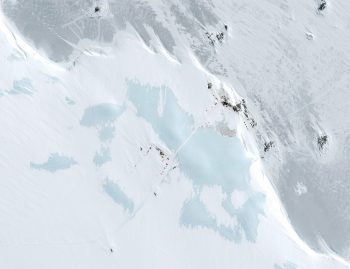
Pleiades satellite image of Prud’homme station. Credits: Pléiades–CNES 2016, Distribution Airbus DS
Didier Schmitt is a member of the space Task Force at the European External Action Service. He is a regular opinion writer in major newspapers and magazines and has published a book on foresight. He will be contributing to this blog during his visit to Concordia – we join him as he days goodbye to Dumont d’Urville and boards L’Astrolabe:
Repair work at Dumont D’Urville base continues throughout the whole summer period. In a month from now it will become difficult to work outside. Typical duties range from a new restaurant roof to the replacement of heat pipes between buildings. Food storage and producing drinkable water is also vital for the over team that stays here all winter.
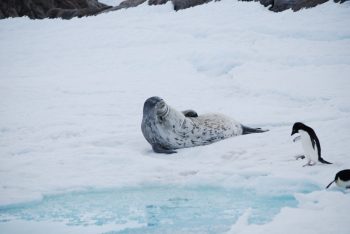
Credits: ESA/IPEV/PNRA–D. Schmitt
The technical support teams help scientists in their special requests for hardware installation or repair such as atmospheric science instruments, tide gauge repositioning, an atomic clock for satellite time synchronisation or a new GPS reference post. The ratio between technical and scientific personnel is 50-50. It is about the same ratio on the International Space Station. This is much better than in some bases where the ratio is 20-80, to the detriment of scientists. You will soon learn more about this on French TV, as a team from TF1 spent a few weeks on the base.
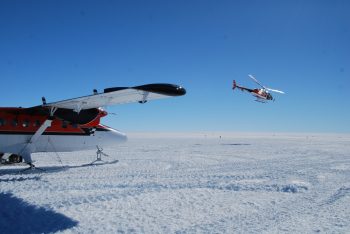
Pick up at Prud’homme. Credits: ESA/IPEV/PNRA–D. Schmitt
The ice sheet just above the Prudhomme station has now melted completely. I walked on moraine rocks that have never been visible before. Young Adélie penguins are well fed here but they suffer from the heat (+3°C). After a cold front the sea-ice became slightly thicker and four of us walked to an opening to watch an adult Weddell seal with a youngster of around 200 kg. Testing the ice with a stick to find the proper return path was tricky. This was my last venture, it is time to pack now.
A DC-3 plane was finally able to land at Concordia to fly all 15 scientists back, and just in time. They were flown to the ship directly from the landing strip. I caught a 50-km flight from Dumont D’Urville station to the Astrolabe by helicopter and thanks to perfect weather, it was fabulous. The most amazing view was from the ship itself: 30 and 40 m high icebergs are just a few 100 m away. One of them drifted towards the ship a few days ago and the captain had to quickly manoeuvre the ship to avoid a collision.
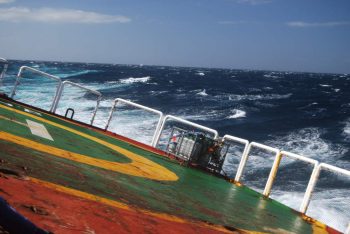
Astrolabe in the waves. Credits: ESA–D. Schmitt
We didn’t have much time to enjoy the view, as the ship left immediately after the last helicopter. However, passing by the bergs in the evening was also marvellous, the setting sun giving them a pink reflection. Crossing the ice-pack when it gets dark was yet another experience – colours changed from red to orange to yellow, the moon being the icing on the cake.
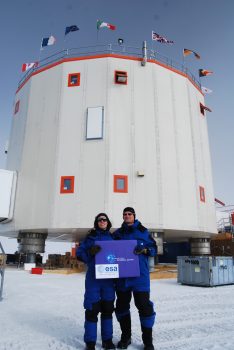
Carole and Didier in front of Concordia base. Credits: ESA/IPEV/PNRA
When I gave my book (Antéversion: ce qu’il faut retenir du future) to Carole – the ESA medical doctor at Concordia – I mentioned that it had travelled by train, plane, bus, boat, helicopter, caterpillar tractor, skidoo, snowplough, and twin otter. It is difficult to summarise such a trip. No travel agent can even offer a fraction of it. It is probably the most remote and challenging ‘scientific adventure,’ apart from a trip to the International Space Station.
What’s next? Putting all this in perspective…




Discussion: no comments